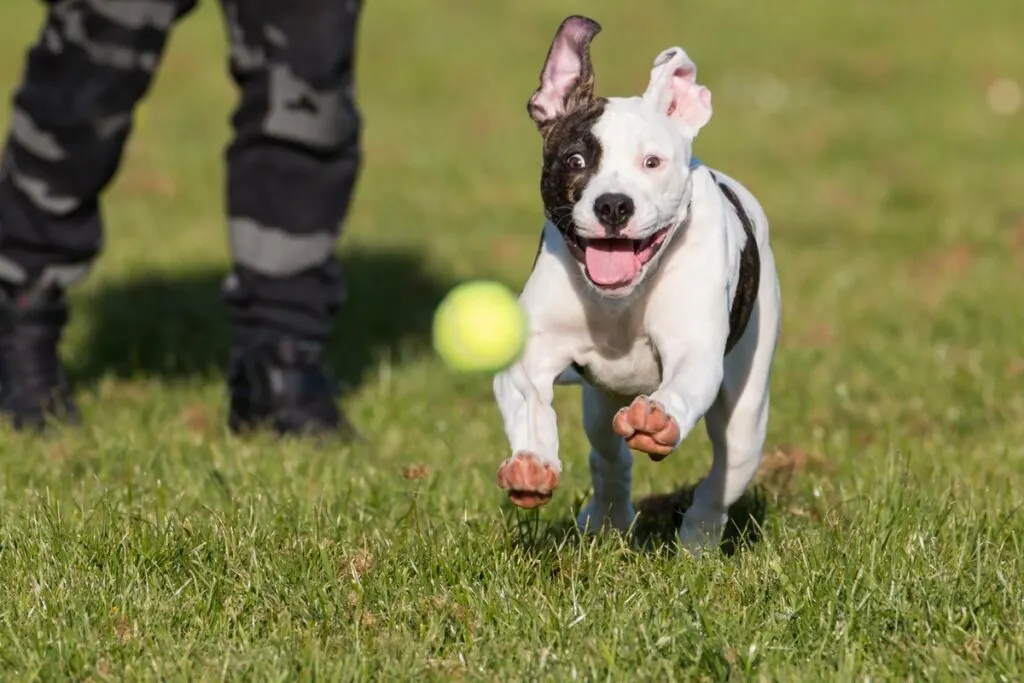The benefits associated with owning a pet are plentiful.
Giving your child a pet will lead to them learning valuable life lessons such as trust, respect, patience, and compassion.
Not only that, pets provide a lot of benefits to children and the family as well.
Both pets and kids will be able to enjoy each other’s high level of energy and will have company when it comes to napping.
If you are on the fence about the possibility of giving your child a pet, it’s ok to be in this position.
As a parent, there are numerous things you’ll need to consider, such as a French Bulldog temperament or your child’s level of maturity.

In this post, we provide some pointers to consider to help you make this decision.
1) Stimulates Immune System
Studies demonstrate that children who live with pets tend to have fewer instances of respiratory tract infections and ear infections.
Research also shows that children with pets tend to need fewer antibiotics than children without.
It is believed that the interaction between a child and a pet stimulates their immune system and makes it stronger as they get older.
2) Therapeutic
Research studies have demonstrated that pets can reduce stress, blood pressure, and anxiety levels.
This is especially the case for autistic children who have pets.
As your child learns to handle negative emotions they experience, a pet can serve as an effective therapeutic tool they can interact with.
3) Empathy
One of the core values of having a pet is that it teaches a child empathy.
The reality is that caring for an animal that depends on you can teach you patience and empathy, such as to not spank them if they urinate on the mat.
In addition to that, children eventually learn to determine their pet’s needs based on their behavior and body language.
In some situations, the pet may get scared and the child can provide comfort.

4) Confidence and Responsibility
Based on the fact that the child will be responsible for the pet, having that responsibility in itself can raise their confidence level.
Young children will eventually learn to manage multiple tasks such as filling their food and water bowl, cleaning up after them, and grooming them.
5) Improve Verbal Skills
Chances are that you have seen a child who could barely speak attempt to verbally communicate with their pets.
As such, pets can give emotional and cognitive language skill support to their young owners.
The presence of a pet can provide verbal stimuli that helps your child when it comes to practicing social skills with another living thing.
How Do You Choose the Right One?
When it comes to actually getting a pet, you should sit and discuss the numerous list of responsibilities that go hand-in-hand with having a pet.
Another thing parents will need to determine is if they feel their child will still want the pet once the “newness” wears off as the dog gets older.
One thing that can help you to determine this is to see if your child has expressed a true and constant passion for getting a pet or if it’s something that they bring up on occasion.
Some of the other things you need to consider before getting your child a pet include:
1) Developmental Progress
If you plan to get a pet for your child, you’ll need to wait until they are mature enough to handle it.
Most experts agree that the ideal age to give a child a pet for the first time is age 5 and 6.
2) Temperaments
You’ll need to consider the characteristics of the animal beforehand.
For instance, certain breeds of dogs such as pit bulls, French poodles, and German shepherds are unpredictable in their behavior.

On the other hand, dogs such as beagles and retrievers tend to be more gentle with children.
3) Allergies
If your child has an allergy, such as sinus or eczema, the concept of introducing a pet into the house would not be an ideal idea.
Based on the fact that animals shed hair, feathers, and skin cells, if your child has an allergy, you’ll need to contact your pediatrician and your veterinarian about the possibility of giving your child a pet.
4) Backup Plan
Once you’ve determined that your child desires to get and keep a pet for the long term, as well as the responsibility associated with it, you need to create a backup plan.
The backup plan should list what you will do in the event that the child is not able to take care of the pet, or if the child simply doesn’t want the pet anymore